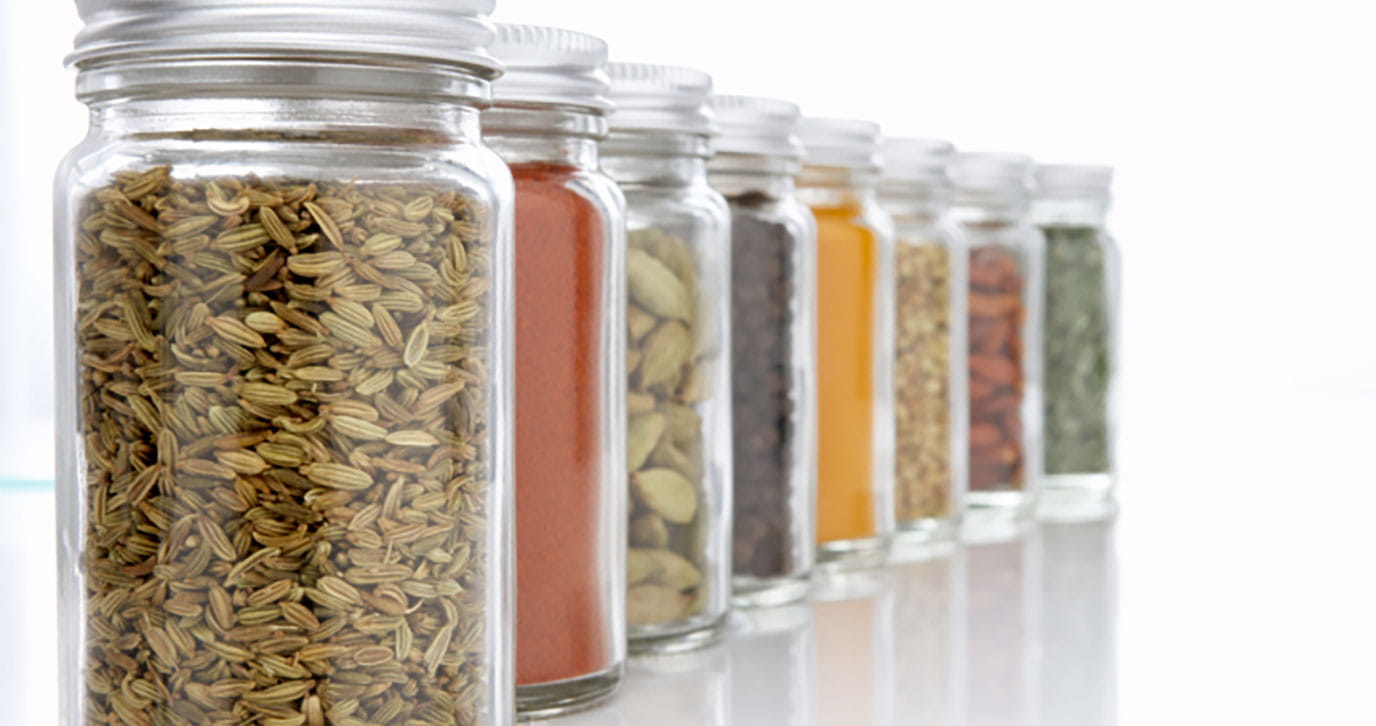“People eat food they like. If the food industry produced bad-tasting food, all of our obesity-related problems would be over!” These comments underscore the challenges facing health professionals and policymakers in any effort to help Americans improve their dietary habits. One problem is that although reducing solid fat and saturated fat intakes is a key goal of the Dietary Guidelines for Americans, the intake of these fats exceeds recommended amounts. (Solid fats include butter, beef fat [tallow, suet], chicken fat, pork fat [lard], stick margarine, shortening, and the fat in fluid milk.) Consumers need practical strategies to help them reduce their solid fat and saturated fat intakes without sacrificing flavor or convenience. Substituting spices and herbs for dietary fat may be a promising strategy for accomplishing this goal. Our research group designed a study to test whether enhancing the flavor of reduced-fat/reduced-calorie foods through the use of spices and herbs improves overall consumer liking, which has been described in depth elsewhere and is summarized here.
STUDY DESIGN
The study hypothesis was that a reduced-fat meal with added spices (RFS) would be liked as much as a full-fat meal (FF) and more than a reduced-fat meal without added spices (RF). The 3 test meals all consisted of the same items: meatloaf with gravy, mixed vegetables (broccoli and cauliflower) in a butter sauce, and penne pasta with a creamy white sauce. The 2 reduced-fat meals (RFS and RF) were 60% to 64% lower in total fat and saturated fat compared with the full-fat meal and were matched for calories (395 calories for both reduced-fat meals vs 550 calories for the FF meal, representing a 28% reduction in total calories). Only salt and black pepper were added to the full-fat and RF meals. The spices and herbs added to the RFS meal were as follows: meatloaf—basil, oregano, garlic & herb salt-free seasoning; pasta—garlic powder, onion powder, Italian seasoning, chervil, chives; vegetables—garlic powder, onion powder, dill.
Participants included 148 adults aged 18 to 65 years who were recruited from the University of Colorado Anschutz Medical Campus and the surrounding community. Participants who met the inclusion criteria gave written informed consent. Their mean age was 35.9 years; 85% were white and had a mean body mass index of 24.4 kg/m2. They were blinded to the test meal conditions. Meals were served between the hours of 11 am and 1 pm on the same day for 3 consecutive weeks. Plates were weighed and photographed before and after meal consumption. After eating the meals, participants were asked to complete a food-liking assessment that consisted of 4 questions (eg, How much do you like or dislike this meal? How much do you like or dislike this meatloaf dish?). A 9-point Likert scale assessed their liking, with responses ranging from “dislike extremely” to “like extremely.” A linear mixed-effects model was used to test differences in liking scores between the different types of foods.
STUDY FINDINGS
As shown in Figure 1, overall liking of the meal decreased significantly from 7.05 to 6.29 when its fat content was reduced (P = .0002). By comparison, when spices and herbs were added, participants reported liking the reduced-fat meal as much as they liked the full-fat version. A similar pattern was found for the individual meatloaf and vegetable dishes (P < .02) (Figure 2). In both cases, when the reduced-fat version included spices and herbs, participants rated the spiced dishes similar to the full-fat version, demonstrating that added spices and herbs made a reduced-fat dish more appetizing.
The liking rating for the reduced-fat pasta containing spices and herbs was significantly higher (P ≤ .0002) than the reduced-fat pasta without added spices and herbs, but it did not achieve parity with the full-fat version (P < .0001) (Figure 2). This discrepancy might reflect the difficulty of making the texture of a reduced-fat dairy product equal to that of its full-fat equivalent simply by adding spices and herbs.
CONCLUSIONS
It is relatively easy for people to sustain behavior changes for a few weeks, but long-term changes are more difficult. Adding spices and herbs to reduced-fat meals might make them more acceptable to consumers who struggle to adopt a low-saturated-fat dietary pattern. Future studies might examine the interaction between sensory changes due to the addition of spices and herbs and satiety. Specifically, if the fat replaced with spices and herbs contributes to satiety, people may feel hungry sooner compared with eating the full-fat counterpart. Another area ripe for research is the interaction of spices and herbs with food texture.















